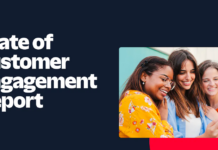In just two years, a lot has taken place in the area of digital transformation. With the pandemic forcing almost everyone to adopt a remote and/or hybrid work setup, businesses had to accelerate their investment on technologies such as artificial intelligence, machine learning, and automation.
Indeed, the gates of Industry 4.0 are upon us, and staying competitive means keeping up with the latest technology to cater to changing customer needs. Common among enterprises’ digital transformation journey is the adoption of hybrid and multi-cloud environments, especially that large volumes of data now drive the wheels of industries. But how exactly will these cloud strategies assist businesses amid the increasing merger of physical and digital worlds?
To hammer out some answers, Jicara Media organised a roundtable entitled “Cloud Strategy in the Industry 4.0 Era and the Physical-Digital Future,” hosted by Equinix and Orange Business Services (OBS), and featured senior IT executives in Singapore.
For Equinix’s AP Digital Strategy Lead, Rajaneesh Kurup, the immediate goal is to harmonise cloud strategies for different customers across industries.
“How manufacturing organisations leverage the power of (the) ecosystem to connect, interact, and provide differentiated services for customers and businesses is critical,” Kurup noted.
Sarah Chong, the Regional Head of Business Development- Cloud, APAC at OBS, likewise agreed that solutions must be ready for customers undergoing a transformation with their cloud strategy.
“With Equinix, we have a very strategic relationship, whereby many of our points of presence are already co-located in purpose-built data centres that Equinix (has). But what has happened is that many of our customers have also evolved from just (co-location), and into the hybrid and multi cloud. So with that, under Orange Cloud for Business, we have signed up strategic relationships agreements with the hyperscalers (for example), whereby globally we could work with a client where they want to land their regions in, so we have the capability in terms of the global reach into this hyperscalers into the interconnections that Equinix offer, as well as adding into the professional services,” she said.
Challenges so far
For GE Healthcare, the varying data protection and security laws across countries have played a key role in their cloud strategy.
The company, which has adopted a multi-cloud strategy, quickly realised the importance of having requirements of access to data across territories, remarked Leonard Ong, Senior Director at GE Healthcare.
“In (the) healthcare business, we produce medical devices, and medical devices produce a lot of machine and patient-related data. And those data are not being used to their fullest potential unless you’re able to somehow extract them, analyse them securely, and so on. But there are a lot of privacy laws, a lot of data security laws in so many different countries. Because of that, we have to re-architect how we store and process data, depending on the jurisdiction,” Ong said.
“During this pandemic, we also support our customers and their hospitals/clinics. When a medical device needs maintenance, for example, we do not need to send someone physically to do on-site maintenance activities, but rather through remote connectivity, to ensure that the hospital and running medical devices (have) the highest uptime possible. This means security; we need to be mindful of the data that we are working with. Because of that, I think this (impacted our decision) on how we do (our) cloud (journey). We may already be (employing) a multi-cloud (approach), but there could be partitions, depending on the countries, based on the regulations,” he added.
Meanwhile, getting the workforce to adopt change has been one of the challenges for one of the technology leaders who participated in the roundtable.
“Different businesses have different cultures, but we really had to push hard into the factories, because the factory manager is not really prioritising his time to talk to you about how to make his operations more efficient. He’s not aware of the technologies available. So we’ve really had to bring the incubation teams together with the teams and the factory, analyse all the processes, and then we sit down and say, ‘Okay, where can technology fill in the gaps here? How can we reduce time and prioritise it better?’” the leader shared.
The leader added that their organisation is currently adopting a hybrid cloud setup, with about 30% cloud usage, and the rest of their data stored on-premises.
“I think our infrastructure is in good shape. But we’re still learning the journey of how to actually put the devices into the field to take real advantage of the technology advances that we’ve made. That’s largely because if we were just a logistics company, maybe it’s easier because you just put something in trucks, and put something in ships, and you track it. But every factory, every device has its own processes, its own way of doing things. And we’re finding that that complexity makes it slow,” the tech leader explained.
“When you are talking about connected factories, the amount of data that’s being produced by hundreds and thousands of sensors, distributed data is going to be important. You need to think about edge-to-cloud architecture— how you move your data, and how soon you need to act on that data. There might be some of the data that you need to act upon in real time in the factory premises. While there will always be a larger data set that you need to look at across multiple sites. This is where distributed data will come in. I think connectivity is going to be very important to make all of this happen,” Equinix’s Rajaneesh Kurup said.
Meanwhile, an executive from a pharmaceutical company likewise agreed that a mindset of convenience must be cultivated across stakeholders in order to effectively enact strategic change.
“In our heads, the end customer is, of course, the healthcare professional, (as well as) the patients, and for all of these people, how can we make the user journey as seamless and simple as possible? If we can do that and connect all the dots together, how can we leverage that data to basically create insights that are actually actionable for the company. It’s an ecosystem, wherein we get their feedback or their insights, we get better, then we give them a better solution. That’s the high-level view, in terms of where we are,” the executive said.
For Chong Yee Lin, the Head of HR Digital Solutions CoE at Air Liquide Singapore, they are focusing more on increasing digitalisation and harmonisation of their existing business people-related business processes across their locations. This is part of a major HR transformation automation initiative, utilising leading-edge HR cloud applications.
“We have successfully done away with the physical-type clocks for employees checking in the remote site for some APAC locations, because we have gone to the web and use geofencing technology that allows very easy mobile-device clocking in and out. We are doing away with multiple, complicated interfaces to physical time-clock machines— an opportunity in time to replace hundreds of these across sites, with very big locations, for example, in China. We should try to pilot and bring this kind of concept to tie in remote sites together, and have a common digitised system that is scalable going forward,” she said.
Into the Industry 4.0 era
With the rapidly integrating physical and digital worlds, enterprises are realising new opportunities to leverage data to increase the value of their products and services.
Central to this strategy is understanding the ecosystem of connected devices, among others, which has allowed companies like Liberty Insurance to look into the promising space of commercial insurance.
“That’s where IoT comes into play for us, because rather than using that data for yourself and reducing your risk, (the) insurance industry at the end of the day is about data and risk. In the commercial space, when you have devices, you basically then can gauge the risk and provide advice to your client saying, ‘Hey, guys, maybe you should look at the pressure, maybe you should look at the temperature.’ And not just in the commercial space, but also in the home (setting), like consider the aspect of the home insurance stuff. Those devices do add a lot of value, both in terms of preventive as well as corrective measures. That’s where the whole space is more of an ecosystem of outside in, rather than inside out,” noted a regional executive at an insurance company.
For Equinix and OBS, the goal therefore, is to enable enterprises to leverage the power of such ecosystems.
“For example, you want to connect and integrate to SAP SaaS services for HR. On average, an enterprise uses six to eight different clouds. With access to rich ecosystems, we can simplify those multi-cloud workflows and reduce the latency between these applications that need to interact with each other. The multi-cloud environment adopted by enterprises is made of not just public clouds but also SaaS services, cybersecurity products, etc. All these providers reside within an Equinix facility. Together with OBS, we simplify the connectivity for the customers to adopt these hybrid and multi-cloud workflows.” Kurup shared.
“What we saw as some of the best practices from our clients, as they move to (the) cloud is actually going back to the basics. Many of them have started in setting up proper CoE governance. So the security is one part of it, which is the cloud CoE itself, which is about people, as well as the right people-process technology. For the success of the implementation of the company, the workforce needs to come along,” Chong concluded.
















